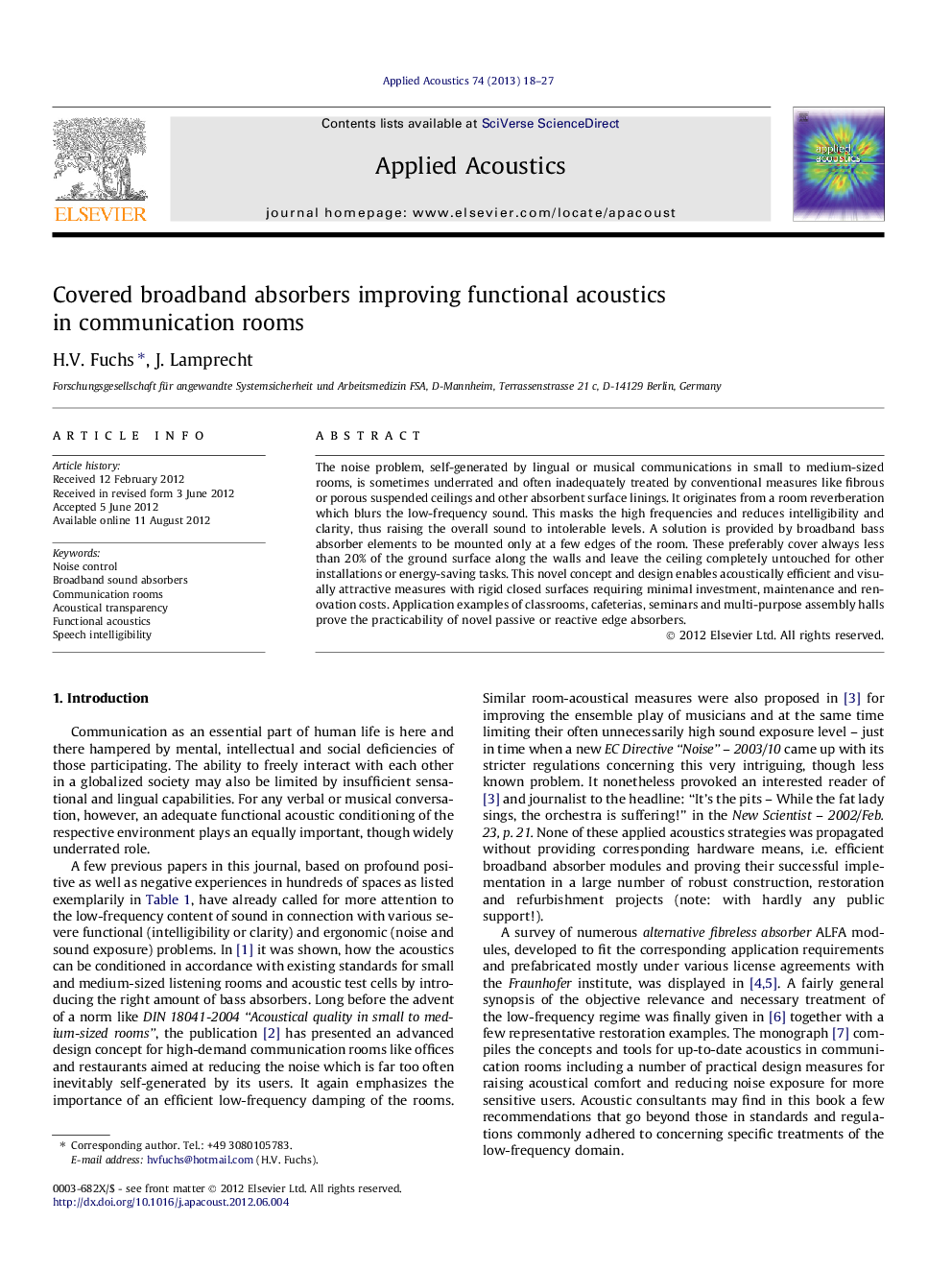| Article ID | Journal | Published Year | Pages | File Type |
|---|---|---|---|---|
| 754715 | Applied Acoustics | 2013 | 10 Pages |
The noise problem, self-generated by lingual or musical communications in small to medium-sized rooms, is sometimes underrated and often inadequately treated by conventional measures like fibrous or porous suspended ceilings and other absorbent surface linings. It originates from a room reverberation which blurs the low-frequency sound. This masks the high frequencies and reduces intelligibility and clarity, thus raising the overall sound to intolerable levels. A solution is provided by broadband bass absorber elements to be mounted only at a few edges of the room. These preferably cover always less than 20% of the ground surface along the walls and leave the ceiling completely untouched for other installations or energy-saving tasks. This novel concept and design enables acoustically efficient and visually attractive measures with rigid closed surfaces requiring minimal investment, maintenance and renovation costs. Application examples of classrooms, cafeterias, seminars and multi-purpose assembly halls prove the practicability of novel passive or reactive edge absorbers.
Graphical abstractFigure optionsDownload full-size imageDownload as PowerPoint slideHighlights► Problems: strong bass reverberation/lack of transparency → poor intelligibility. ► Effects: voices (unwillingly) raised/thresholds shifted → sound levels increased. ► Solution: low-frequency damping/flat reverberation → relaxed communication. ► Tools: compound panel absorbers, broadband compact absorbers/covered edge absorbers. ► Applications: class + conference rooms/lecture + gathering halls/cafeterias + restaurants.
